OUR SPECIES
All our standard and float profiles are available in the following 10 species
PLEASE NOTE - Photos are indicative of colour only. Timber colour can vary greatly and we offer no guarantee that we can match what is seen on screen or to your sample.
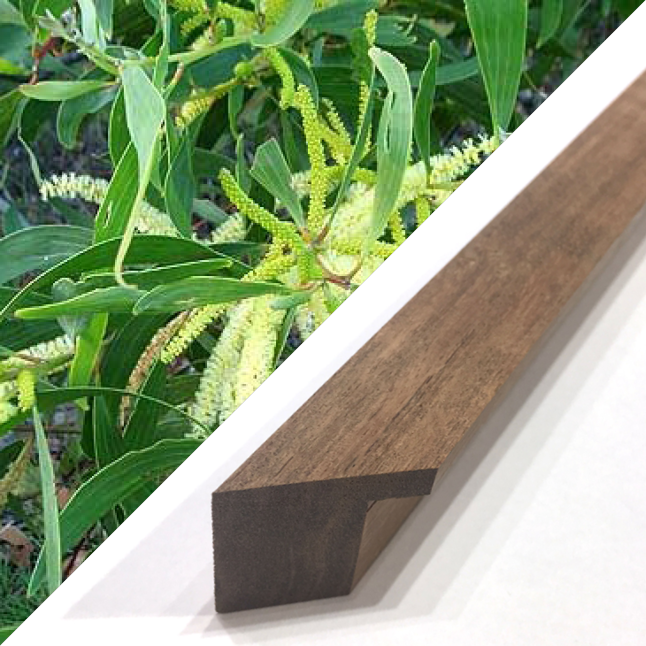
QUEENSLAND BLACK WATTLE (Acacia Auriculiformis)
This species is found very prolifically all over Australia. It has also been introduced to many other regions worldwide. This has led to it being labelled as an invasive species, displacing native vegetation. Its most common use was in the production of tannins from its bark but has also been used in flooring.
What we’ve found:
The warm brown colouring makes it a great all-rounder. It also offers a more varied patternation giving an earthy and natural feel. It can have small knots and subtle imperfections which adds a certain charm of a natural timber. Once oiled, the grain and feathering traits really pop.

BLACKWOOD Please note we no longer offer Blackwood (Acacia melanoxylon)
This species is endemic to most of Australia in uplands and mountain rain forests between 750-1250m although rarely grows large enough to produce millable logs. The stem bark material has been active against certain tumors and the timber produced is a dark and highly figured, decorative cabinet timber.
What we’ve found:
Blackwood is a favourite with framers due to it being easy to work with and has a lovely mid-brown caramel tone which polishes quite well. The tones can be complimented by reddish streaks or bands of darker colours, indicating the growth rings of the trees.
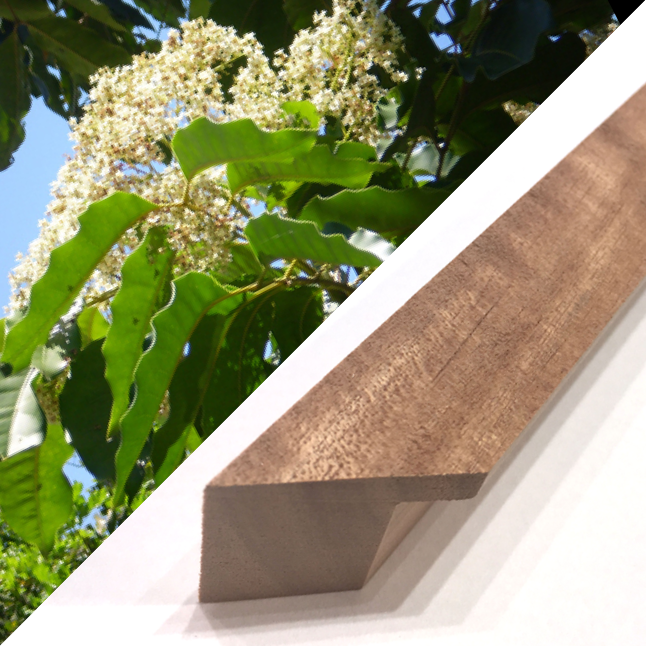
QUEENSLAND MAPLE (Flindersia brayleyana)
This species is endemic to Queensland only really occurring between the Windsor Tableland and Mt Spec near Townsville and attempts at growing this species in plantations are generally not very successful. While the timber is good quality and very decorative it is in very limited supply. It was used extensively in the war effort along with cigar boxes, window frames and cooperage.
What we’ve found:
This species is rather light in colour and can be quite patterned with striking variations in both colour and grain. None of which takes away from its beautiful natural lustre. It is very easy to work with, being both soft and relatively lightweight.
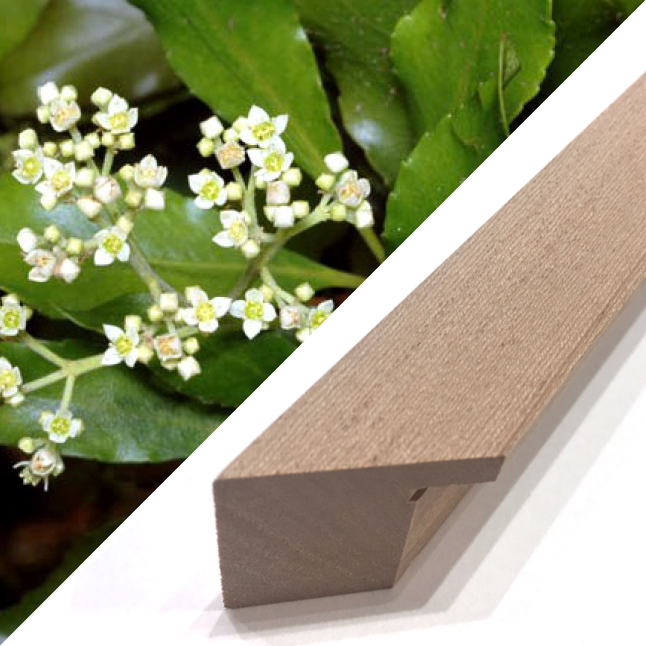
SATIN SYCAMORE (Ceratopetalum succirubrum)
Is usually found in North Eastern Queensland between Bloomfield and the Atherton Tableland. The heartwood of this species is a pale or pinkish brown colour. Texture is fine and even. Grain is usually straight, with occasional interlocking. This timber is often used in furniture, cabinetry and occasionally as the sides and backs of acoustic guitars.
What we’ve found:
This is an easy to join timber with a generally tight grain but sometimes comes with beautiful cathedral markings. The light pinkish, brown colouring has been popular with artists for exhibition framing. Colour can vary from pale pink to a stunning mauve grey.
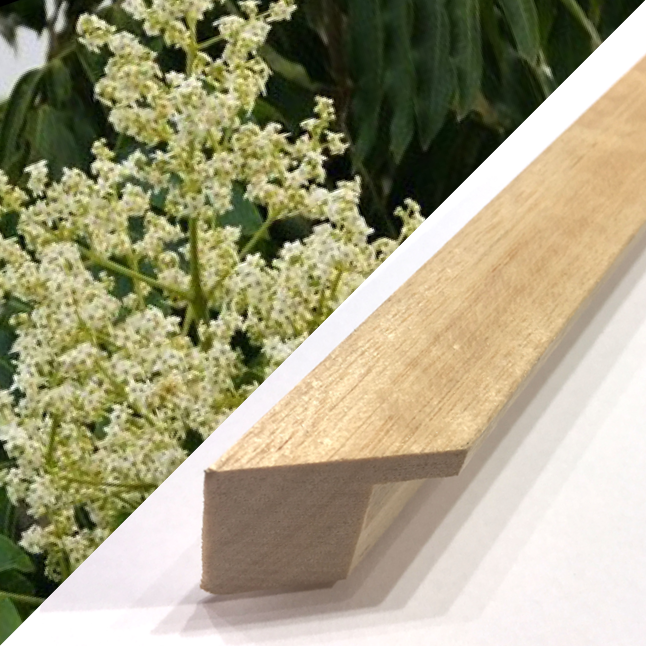
SILVER ASH (Flindersia schottiana)
Usually native to the Cape York Peninsula and North East Queensland this species can be found from sea level to about 1000m as far south as north east New South Wales. Originally used for cooperage, cricket stumps and billiard cues, it produces a very pale high quality cabinet timber which takes a high polish.
What we’ve found:
Due to this timber being very easy to work with and generally of a consistent colour, it is a fantastic choice for fine art framing.
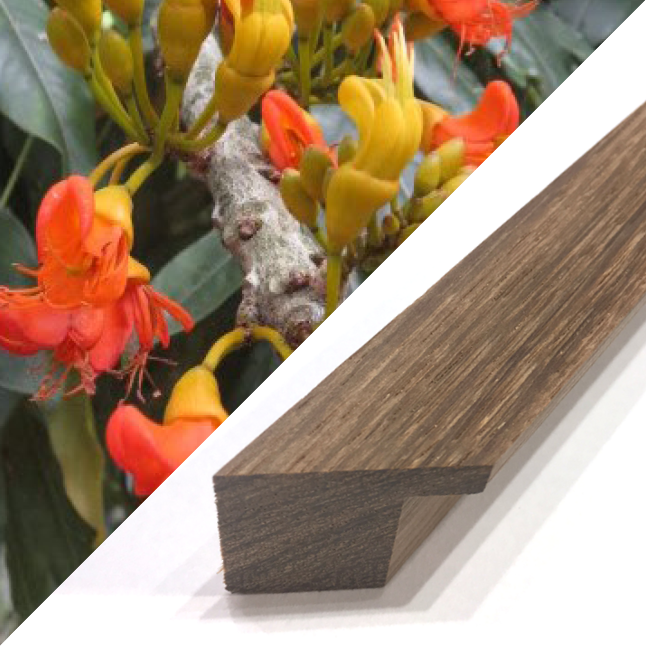
BLACK BEAN (Castanospermum australe)
Usually native to Cape York Peninsula and North East Queensland this species can be found from sea level to about 800m as far south as north eastern New South Wales. This tree is used extensively as a street tree and it produces a strong and durable timber which is very suitable for carving.
What we’ve found:
This is one of the most popular species with a consistent tone that naturally ages to a dark chocolate brown. It can vary on hardness which can make it a little difficult to underpin. Having a good strap clamp on hand is always a great idea when working with native hardwoords.
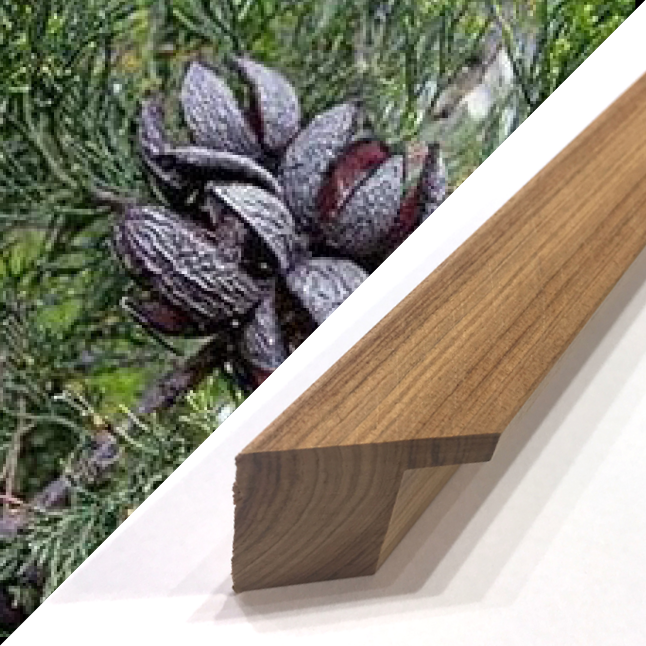
CYPRESS PINE (Callitris glaucophylla)
This species is naturally widespread, extending from central western Queensland to Victoria and through most of western New South Wales. It is mostly known for its use in the construction industry but is also used in furniture, internal and external, joinery and parquetry flooring.
What we’ve found:
What can we say? Cypress is the go too when looking for the knots, colouration and random rough timber look. It should be noted that this timber can come with large knot holes and this is part of its charm. Think log cabin, ski lodge and mountain retreats.
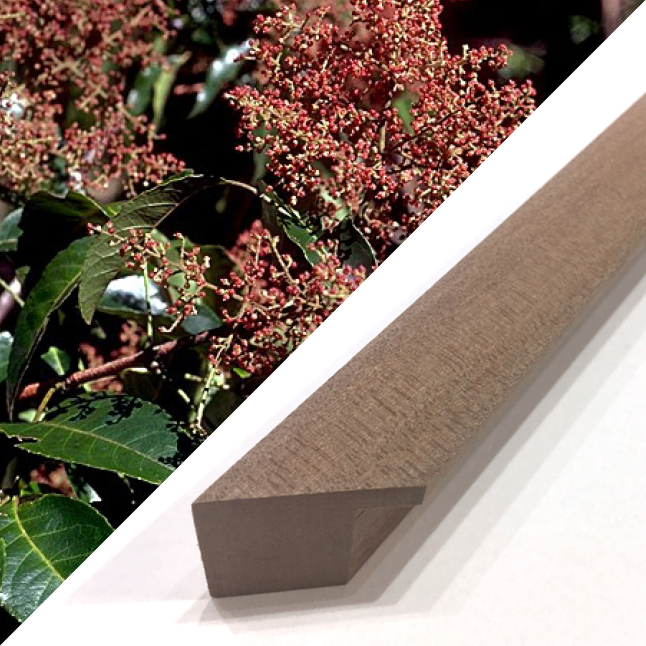
ROSE ALDER (Caldcluvia australiensis)
This species is widely distributed through the coastal rainforests from the Atherton Tableland in QLD to the Illawarra district in New South Wales. It presents with a close and even grain which can show a silky sheen when dressed. It is more commonly used as a dressed timber in construction but is also used in joinery, carving and picture frames.
What we’ve found:
The mauve colouration and close even grain gives it a more classic look, suitable for those antique pieces. It is very light and easy to join. This timber can have subtle but sharp variations in the grain colour.
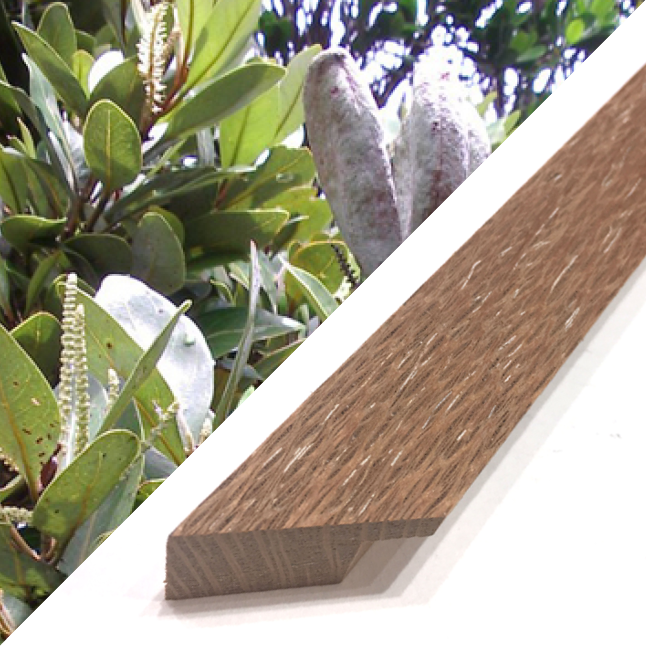
SILKY OAK (Cardwellia Sublimis)
Usually native to North East Queensland and widespread throughout the area from sea level to 1200m. This tree produces one of the most decorative and most useful timbers in northern Queensland. It can be used as a beautiful cabinet wood due to its lovely grain and is also a useful and moderately durable wood which has been used extensively in the construction of many homes.
What we’ve found:
Being the quintessential Australian timber of choice in framing for many years, it can range from pink to yellow tones and can be provided both standard sawn or quarter sawn on the face, as to your requirements.
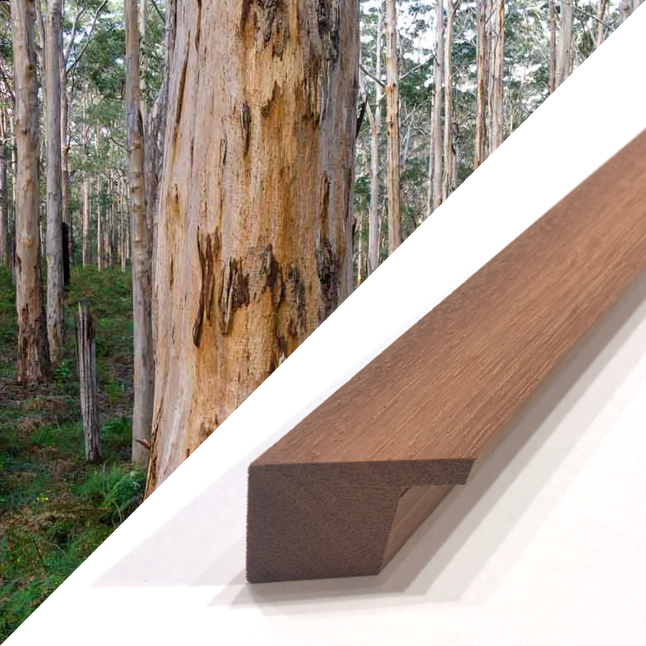
WESTERN AUSTRALIAN KARRI (Eucalyptus diversicolor)
This species is generally found throughout South Western Australia and is rated amongst the tallest trees in Australia and it generally provides very long runs of defect free lumber. It is one of the more dense hardwoods in our range but does join successfully using hardwood v nails and good clamp pressure. Commonly used throughout the construction industry in flooring, furniture and cabinetry.
What we’ve found:
Although a more dense hardwood we have found this a great substitute for Jarrah both in its lovely red tones and is still much easier to join. Jarrah is too dense and hard to join even on the higher end model Cassese underpinners. Karri works beautifully on indigenous artworks and anything that needs a warm tone in the framing.

